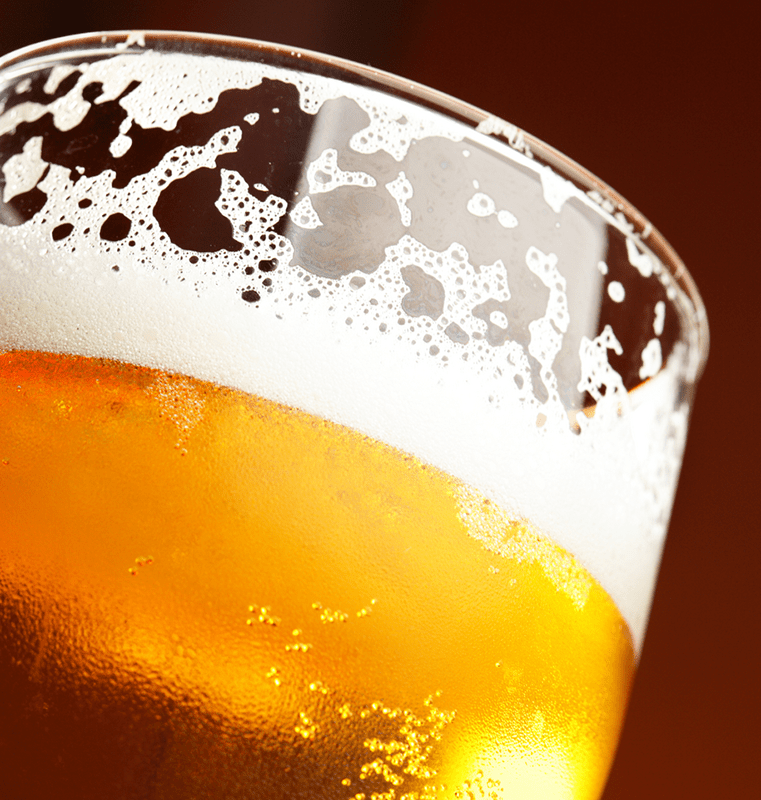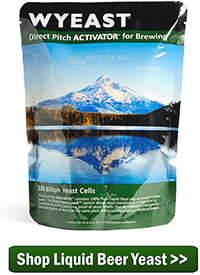 Esters are one of many byproducts of fermentation and they’re an important flavor element of many beer styles that are produced by the beer yeast. When things go well, the esters lend a subtle complexity to beer with aromas usually described as fruity, sometimes banana. But when yeast is stressed, ester production may go overboard, and in addition to a number of other compounds, may contribute to some unpleasant, solvent-like off-flavors. This is the double-edged sword of homebrew yeast esters.
Esters are one of many byproducts of fermentation and they’re an important flavor element of many beer styles that are produced by the beer yeast. When things go well, the esters lend a subtle complexity to beer with aromas usually described as fruity, sometimes banana. But when yeast is stressed, ester production may go overboard, and in addition to a number of other compounds, may contribute to some unpleasant, solvent-like off-flavors. This is the double-edged sword of homebrew yeast esters.
The key to getting good ester production from your yeast is keeping them happy and healthy. This means pitching an appropriate number of yeast cells and maintaining a fermentation temperature that is within a target range. There’s no one-size-fits-all solution to achieving the right level of ester production. The right fit will be determined by the yeast strain, the beer style, and the gravity of the beer. For example, what’s appropriate in a Belgian tripel would be out of place in an Irish stout – though it could make for an interesting Belgian stout!
But regardless of the style of beer you’re brewing, you’ll want to make sure that homebrew ester production is balanced. It really comes down to yeast strain selection, temperature control, and pitch rate.
Yeast Strain Selection
First, pick a yeast strain that is typical for the style of beer you’re brewing. If you aren’t brewing to style, then select a strain that embodies the flavor and aroma characteristics you’re going for. American ale strains tend to have relatively low ester production and so are often described as “clean.” English ales often exhibit some mild fruity character, so English ale yeast strains produce slightly more fruity esters. Belgian yeasts and other expressive strains, like German hefeweizen yeast, are known for higher levels of ester and phenol production. Lagers, in general, tend to have very little ester production.
Using Temperature to Manage Flavor and Aroma
After you’ve picked your yeast strain, decide how estery you want the beer to be. Higher fermentation temperatures tend to increase ester production. Many brewers who consider esters a key flavor component of their Belgian ales deliberately ferment their beers in excess of 75˚F. I’ve even heard of a brewer who won’t ferment a saison below 90˚F!
On the other hand, if you want to brew a clean ale that lets the malt and the hops shine through, you won’t want to ferment at such extreme temperatures. You will want to do what you can to keep homebrew ester production low. All beer yeast is packaged with temperature guidelines. If you want to avoid excessive esters, stay away from the high end of that range. This may mean getting a fermentation chamber or at the very least setting up a swamp cooler for your fermenter.
Pitch Rate
A key to keeping homebrew esters in check is pitching an adequate amount of yeast. Underpitching tends to drive fruity ester production, so use a yeast pitch calculator to make sure your yeast starter is big enough. On the other hand, underpitching may work to your benefit. Some brewers deliberately underpitch hefeweizen yeast to increase the banana esters the style is known for.
Learning how to best control homebrew esters will largely come from experience, but there is a decent amount of information online about the characteristics of different beer yeast strains. Next time you brew a beer, do a little research on other brewers’ experience with your yeast strain of choice. With the right yeast selection, fermentation temperature, and starter size, you’ll be well on your way to brewing a well-balanced beer with the perfect level of esters!
—–
David Ackley is a writer, brewer, and craft beer marketing consultant. He holds a General Certificate in Brewing from the Institute of Brewing and Distilling and is founder of the Local Beer Blog.
